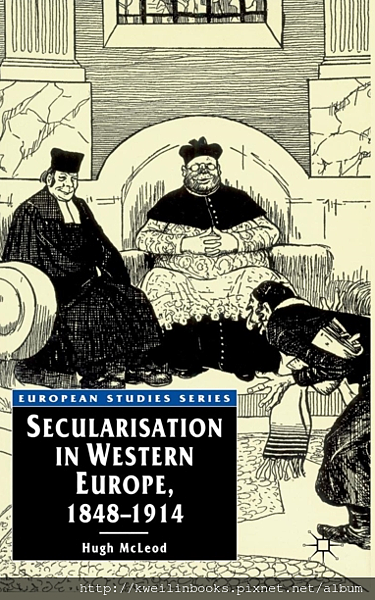Secularisation in Western Europe, 1848-1914 (European Studies Series)
世俗化可能意味著許多完全不同的東西 - 不信任,信仰私有化,弱化宗派認同,宗教中立國家的發展。這本書既揭示了世俗化的多面性,也揭示了它影響不同生活領域的巨大不平衡。法國是十九世紀晚期社會世俗化的典型例子。
教堂和學校,然後是教堂和州,是被分離的。鎮議會撕毀十字架和禁止遊行。教師和醫生被視為新的祭司。
但即使在法國,事情並不那麼簡單。在西方,大多數人仍然在修煉天主教徒,盧爾德顯示了“大眾宗教”的持續生命力。當我們看德國和英國,或比較天主教與新教徒和猶太人時,情況變得更加複雜。
本書考察了三國宗教變革的性質和原因,以及三者之間的階級、性別和地域差異。
Secularisation can mean many quite different things - rising unbelief, the privatisation of belief, weakening denominational identity, the development of a religiously neutral state. This book reveals both the many-sidedness of secularisation and the great unevenness with which it affected different areas of life. France is the classic example of the secularisation of society in the later nineteenth century.Church and school, then church and state, were separated. Town councils tore down crosses and banned processions. Teachers and doctors were seen as a new priesthood.Yet even in France things were not so simple. In the west, most people remained practising Catholics, and Lourdes demonstrated the continuing vitality of 'popular religion'. When we look at Germany and England, or compare Catholics with Protestants and Jews, the picture becomes even more complex.This book examines the nature and causes of religious change in the three countries, and the class, gender and regional differences within each.
Hugh Mcleod(Autor)
Publisher:Palgrave Macmillan
ISBN: 978-0333597477
原價 £ :49.50 NT$:2475 ||PIXNET_ARTICLE_TAGS||痞市集,圖書╱雜誌
文章標籤
全站熱搜



 留言列表
留言列表


 {{ article.title }}
{{ article.title }}